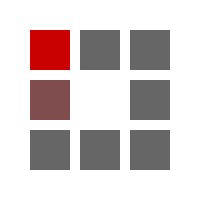The Color Page Is Full Of A Bunch Of Hidden Gems
Two weeks ago I was giving an online virtual class to a bunch of seasoned Resolve colorists and a few of their assistants at a major sports network here in the U.S.
This group had a ton of Resolve and DaVinci (8:8:8, 2k, 2k+) knowledge and while the class was about color management pipelines in HDR, at the end of the second day we had a few spare hours left and had already covered everything I had planned to cover. That’s when someone just said ‘show us some cool stuff!’
Geez! How the roles had reversed! Colorists now sounding like demanding commercial clients!
Over the next few hours there were lots of comments like ‘oh, I had forgotten about that!‘ or ‘wow, I didn’t know that was there.’
In our day-to-day use of Resolve, each of us tends to get into a groove – using the tools we use and are most comfortable with. However, Resolve is a VERY deep application, and these days, it’s virtually impossible to remember every right-click, or where every button is just on the Color page not to mention the rest of the application – there is a reason the Resolve User Manual is now over 3000 pages!
In this Insight, I’d like to share a bunch of cool Color Page features that in talking to colorists are easy to forget about, or maybe just hard to discover. Of course, this is not an exhaustive list of these types of features, and furthermore, for some of you, everything listed here might just be a reminder – that’s ok, you can refresh yourself on some of these things if it’s been a while since you’ve used them.
Viewer: Split Screens
One of the things I love most about coloring projects is the comparative aspect of it – before/after, shot matching, etc. Our brains are actually designed to work comparatively. Put two monitors side by side and it’s easy to see if they match. However, put those two monitors in different rooms, the task becomes much harder.
Comparison is one of the reasons I LOVE split screens and I’m always surprised by how many Resolve colorists don’t know about them or don’t use them.
Essentially, split screens let you compare side-by-side clips on your timeline and in the gallery in different ways.
You can activate spit screens by clicking on the split screen button in the upper left of the Viewer or by going to View > Split Screen > On, or by using the default keyboard short cut Option(ALT) + Cmd(Ctrl) + W. Once you enable split screens you can choose from a variety of flavors from a pull-down in the upper right of the Viewer or again from View > Split Screen > Split Screen Mode.

Here are the available modes:
Member Content
Sorry... the rest of this content is for members only. You'll need to login or Join Now to continue (your career will thank you!).
Need more information about our memberships? Click to learn more.
Membership optionsMember Login
Member Content
Sorry... the rest of this content is for members only. You'll need to login or Join Now to continue (your career will thank you!).
Need more information about our memberships? Click to learn more.
Get Answers, Join Now!Member Login



